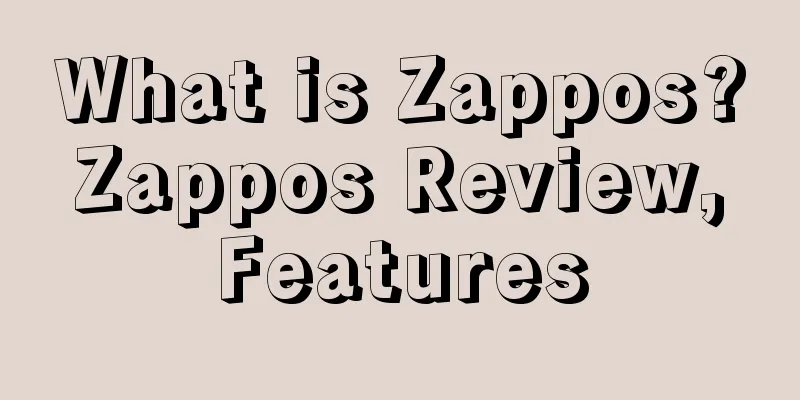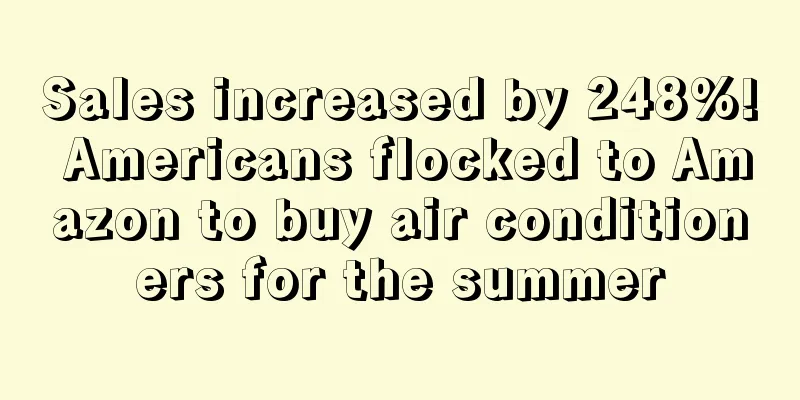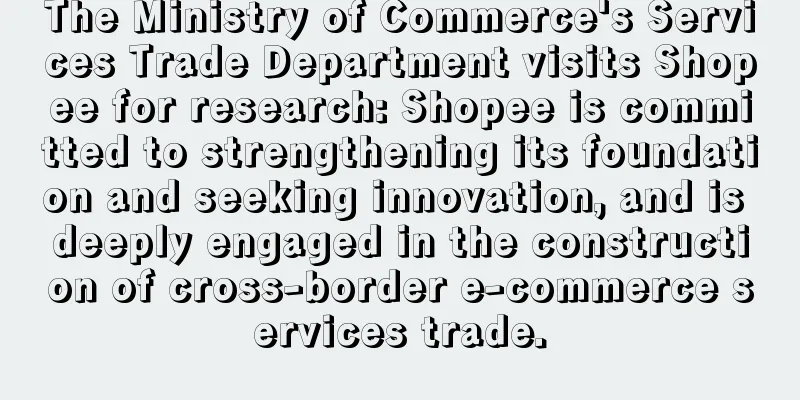What is Zappos? Zappos Review, Features

|
Zappos is a US B2C website focusing on shoes. It was founded in 1999 and has grown into the largest online shoe website. Now, Zappos' sales range has expanded from the earliest shoes to handbags and clothing.
About Zappos Zappos is an e-commerce company focused on footwear. Its headquarters is located in Henderson, Nevada, and its warehouse is located in Shepherdsville, Kentucky. Zappos also has two retail stores in Las Vegas and Henderson, Nevada. Nick Swinmurn and Tony Hsieh are the founders. It is worth noting that Tony Hsieh, the founder of Zappos, is also Chinese, just like Steve Chen, the co-founder of YouTube. CEO Profile Tony Hsieh, CEO of Zappos, was born in Illinois. His parents came to the United States from Taiwan. He is the eldest of three brothers and spent his childhood in the North Bay of San Francisco. The precocious Hsieh not only did well in his studies in middle school, but was also a computer genius, winning numerous awards. He was then admitted to Harvard University, majoring in computer science. In fact, he received his diploma at the age of 19, which made him a celebrity on campus. Xie Jiahua gave up his job as an Oracle programmer in early 1996 and started LinkExchange in a two-bedroom apartment with $20,000 in capital. In May 1997, he received a $3 million investment from Sequoia Capital, and in November 1998, Microsoft announced that it would acquire LinkExchange for $265 million in stock. After that, the 24-year-old Tony Hsieh became an angel investor. In 1999, he met a younger entrepreneur than himself - Nick Swinmurm. Swinmurm opened an online shoe store ShoeSite. Tony Hsieh thought the idea was great, so he invested $500,000 and changed the name of the website to Zappos. Six months later, Tony Hsieh joined the company to run the business with Swaim, and officially became the CEO of Zappos in 2000. Tony Hsieh later invested more than $10 million in Zappos as an individual and through his venture capital firm Venture Frogs, and introduced an investment of about $44 million from Sequoia Capital.
Marketing Guide 1. In order to facilitate customers to choose shoes of different styles and colors, Zappos took photos of each shoe in stock from 8 different angles. In the warehouse in Kentucky, Zappos has 1.3 million pairs of shoes in 58,000 styles. The task of taking photos is extremely difficult, but Zappos has completed it. 2. In order to ensure timely delivery, Zappos moved its warehouse to the airport near the United Parcel Service (UPS), and the warehouse operates 24 hours a day. Zappos not only wants to satisfy customers, but also wants to surprise them - the company promises to deliver within 4 days, but in most cases, customers can get the goods the next day. 3. Free returns and exchanges: In terms of operations, Zappos promises customers that if the shoes do not fit, delivery and return will be free of charge. For this, Zappos paid $100 million in shipping costs. 4. Delayed payment: Next, Zappos launched a post-sales delayed payment method. Customers do not have to pay within 90 days after purchasing Zappos products. This corresponds to free returns and exchanges, which once again relieves customers of decision-making pressure.
Business Model 1. Shopping experience: From the beginning, Zappos has provided customers with a special shopping experience, which makes customers exclaim "WOW" in surprise after finishing their shopping. In order to operate successfully, it is necessary to ensure that customers can complete online shopping comfortably. The company has used many different ways to deal with this challenge, including free returns, providing special online product information, telephone contact, free early morning shopping, etc. 2. Dispel concerns: To make customers willing to buy shoes online, the most important thing is to handle the problem properly. Customers can comfortably buy suitable products that are available, and can return them if they are not suitable. Zappos soon realized that they could solve this key problem by offering free returns, which started with 60 days of free returns and later extended to 365 days; in addition, customers can buy several pairs of shoes of different styles at the same time, keep the suitable ones after trying them on, and return the unsuitable ones. In fact, Zappos's approach has greatly relieved consumers' decision-making pressure, and coupled with the subsequent deferred payment policy, it has become very simple for consumers to make decisions. 3. Product information: When customers are shopping, it is necessary to provide them with as much information as possible. Zappos accomplishes this in several ways: providing complete physical information. When new styles are launched, pictures will show the physical products from different angles. The Zappos website has a detailed discussion of people's steps and teaches customers how to choose a pair of shoes that suits them. It also provides a customer feedback platform where customers can choose to write suggestions for the shoes they purchased. The company does not edit these suggestions in any way, nor will it delete disrespectful words. 4. Customer Service Center: Zappos' success lies in the pursuit of customer satisfaction at all costs. Its famous customer service center is widely praised and often brings "WOW" surprises to customers. In order to satisfy customers, customer service can personally fly to deliver goods to customers. The most extreme service is that if the goods are out of stock and the customer is very anxious, they will even refer the customer to a competitor. 5. Attract brands: In the first year of the company's operation, Zappos signed 60-70 brands' network distribution contracts. Zappos attaches great importance to the brands that customers ask to buy. Customers often tell the operators of the customer service center what brand of shoes they want. The customer service logbook records the shoe brands that customers cannot find on the Zappos website. Zappos will evaluate the value of listing these brands and seek to sign contracts. As Zappos becomes well-known in this industry, brands begin to contact Zappos to discuss the goods to be sold online. 6. New Value Equation: Xie Jiahua believes that one of the main reasons why Zappos was able to achieve its $1 billion sales target is that they decided to invest time, money and resources in three key areas: customer service (facilitating the establishment of the brand and a good reputation), culture (forming 10 core values), and employee training and development (ultimately leading to the formation of a training team). The brand may lag behind the culture at the beginning, but eventually the two will go hand in hand. Xie Jiahua actually gave a new equation, and happiness energy or value is transmitted on this equation.
Sales -In 2000, Zappos' total sales were $1.6 million. -By the end of 2002, Zappos had sales of $32 million but was not profitable. -In 2004, Zappos' sales were $184 million, double the previous year, making it the largest online shoe seller. -In 2005, the company's sales doubled again to $371 million, making it one of the 500 fastest growing companies in the United States. -In 2006, Zappos' sales reached $597 million, with more than 500 brands and more than 90,000 types of shoes. -In 2007, Zappos' sales reached $840 million, net profit was $1.8 million, and 1,100 brands were added. - Gross revenues exceeded $1 billion in 2008 and net income was $625 million (up 21% year-over-year). -In the first quarter of 2010, Zappos net sales increased 50%.
Corporate core values 1. Make people feel WOW through service. 2. Embrace and drive change. 3. Create fun and a little bit of fun. 4. Be brave to take risks, be innovative and have an open mind. 5. Be proactive and keep learning. 6. Build open and honest relationships through communication. 7. Build a positive team and shape family spirit. 8. Strive to get twice the result with half the effort. 9. Full of passion and decisiveness. 10. Be humble.
Development History -In 1999, Tony Hsieh invested $500,000 in Swaim's online store ShoeSite and renamed it Zappos. Soon after, Tony Hsieh invested another $10 million in Zappos. When Zappos was first founded, Michael Moritz led a $48 million venture capital investment. -In 2004, Sequoia Capital injected $10 million of venture capital into Zappos. Together with other investors, Zappos received a total of $20 million. The following year, Sequoia Capital injected another $15 million into Zappos. -At the end of 2006, Zappos opened its first store in Las Vegas. -In 2007, Time magazine named it one of the "25 Websites You Can't Live Without". -In early 2008, Nick Swinmurn stepped down from the management team. -In November 2009, Amazon.com acquired Zappos.com for $1.2 billion. -On May 1, 2010, Zappos reorganized into ten independent companies under the Zappos Family umbrella. |
<<: What is AliExpress Express? AliExpress Express Review, Features
>>: What is 6PM? 6PM Review, Features
Recommend
What is GATI Logistics (Jiadi Freight Forwarding)? GATI Logistics (Jiadi Freight Forwarding) Review, Features
GATI Freight Forwarding (Shanghai) Co., Ltd. is a ...
What is Arvato Financial Solutions? Arvato Financial Solutions Review, Features
Arvato Financial Solutions provides complete end-...
What is aubady? aubady Review, Features
Aubady is a private company specializing in the pr...
What is Mechanic International Logistics? Mechanic International Logistics Review, Features
Shenzhen Meichang International Logistics Co., Ltd...
ByteDance's big move? Another e-commerce app is launched!
Competition in the domestic e-commerce market is ...
What is Baboon? Baboon Review, Features
Baboon offers best-in-class adventure essentials, ...
Ozon cuts cost of shipping ultra-small goods to Russia by more than half
Ozon has introduced a new logistics freight polic...
Consumers exceed 90 million, social shopping becomes a trend in the United States
E-commerce in the United States is developing rap...
Etsy has a bug on the first day of its Labor Day sale
Etsy's Labor Day sale started on August 30 an...
What is Shuangkai International Logistics? Shuangkai International Logistics Review, Features
Shuangkai International Logistics Company , headqu...
What is Trendy Butler? Trendy Butler Review, Features
Founded in 2015, trendybutler is positioned as a ...
E-commerce demand increased by 104% year-on-year! BBW in the United States accelerates digital transformation
Build-A-Bear Workshop ( BBW ), an American plush ...
What is Monreit? Monreit Review, Features
Monreit Technology Co., Ltd. is a cross-border e-c...
What is DPD? DPD Review, Features
DPD is a world-renowned express carrier and parce...
What is Liandong Advantage & Liandong Advantage Review
Liandong Advantage Technology Co., Ltd. (hereinaf...









